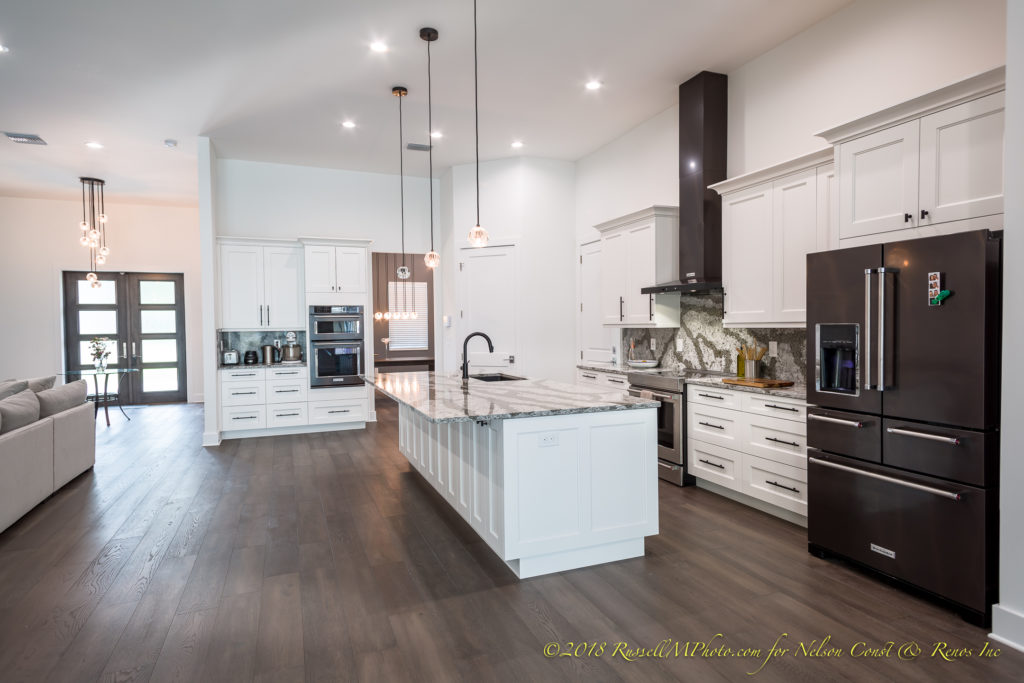
This Transitional Style home we built in Clearwater includes quartz countertops, Shaker-style cabinets, unique light fixtures, and a variety of modern and traditional elements.
Are you planning your new home or a major renovation but can’t decide on the style you want? Is it a tug of war between going with a traditional style of comfortable furniture and classic designs or a modern style of sleek, clean lines? You will be happy to learn that you can have them both in the trending transitional style.
The eloquent luxury transitional style gives you the freedom to pick your favorite elements from both traditional and modern resulting in a harmonious fusion that is comfortable, classic and chic.
When well executed, one of the major benefits of building a custom transitional home is the freedom to choose your favorite elements from each style without sacrificing the aesthetic, worth, or quality of the final product.
So, how can you do this and what are the elements to consider?
To start, here are simple definitions for traditional and modern style.
Traditional style is a design and architectural style based on the classic styles of old Europe. It uses such elements as crown molding, wainscot, chair rail, coffered ceilings, as well as natural materials such as wood.
Modern style is all about minimalism, clean-sleek-lines, tapered legs and crisp angles to create an open, airy feel. It leans on using man-made materials such as glass, metal and concrete.
The transitional style is a hybrid, inviting the soft lines and comfortable furnishings of the traditional style without the fuss while keeping the color palettes and sleek modern styling.
Here’s a list of some elements you can consider when creating your transitional style:
- Choose a neutral color scheme of grey, sand or white which follow the traditional style, but consider adding some bold accents to create some contrast.
2. Don’t overdo it on fancy woodwork. In keeping with the modern influence, avoid ornate crown molding or wainscot. Keep it simple.
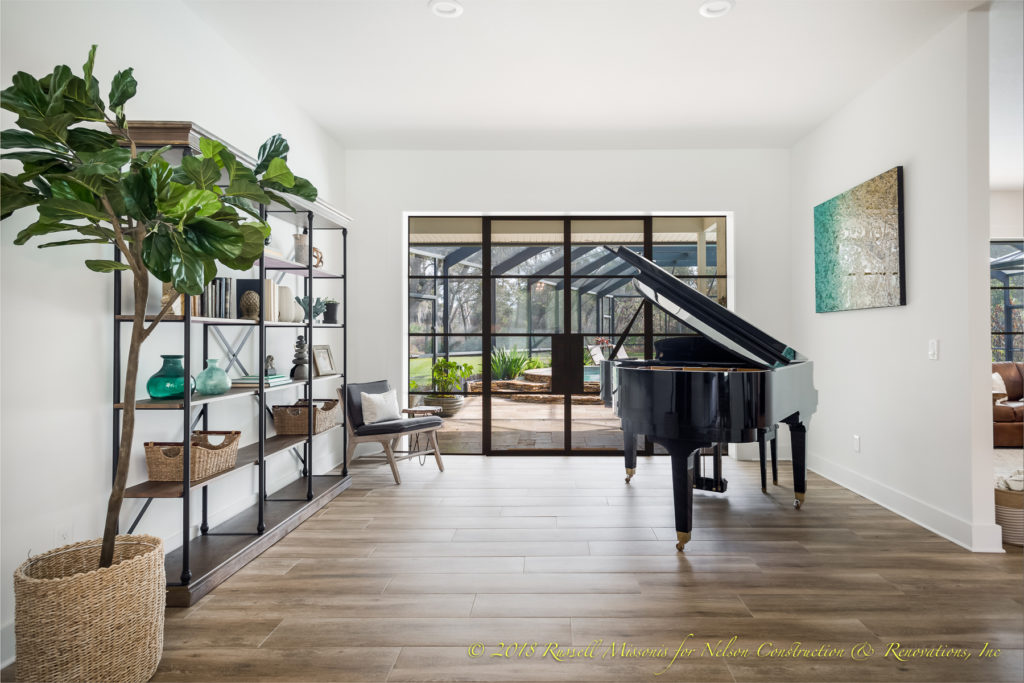
This transitional-style room uses smooth walls sans crown molding and a simple baseboard over wood-look tile, keeping the look clean and simple.
3. Transitional style lighting uses contemporary lighting and is an exciting way to transform your home. Lighting can have a wondrous impact on a room and fixtures are becoming prominent as the offerings explode. Choose an inspirational contemporary chandelier or molecular light as an eye-catching focal piece.
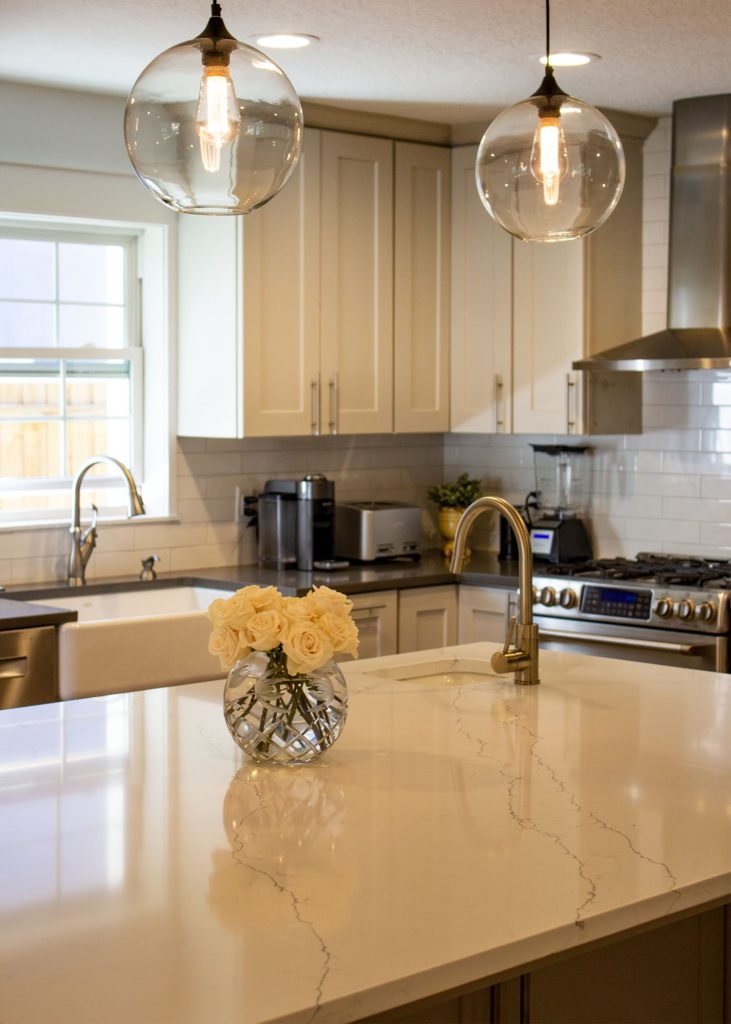
Shaker-style cabinets and classic subway tile balance the man-made materials such as glass and quartz in this transitional-style kitchen.
4. Metallic elements are much sought after in today’s popular transitional style for the reason that they work seamlessly with any design style. Incorporate gold, bronze or copper through faucets, lighting, side tables, and accessories. Also check out our blog, The Art of Mixing Metals in Your Home.
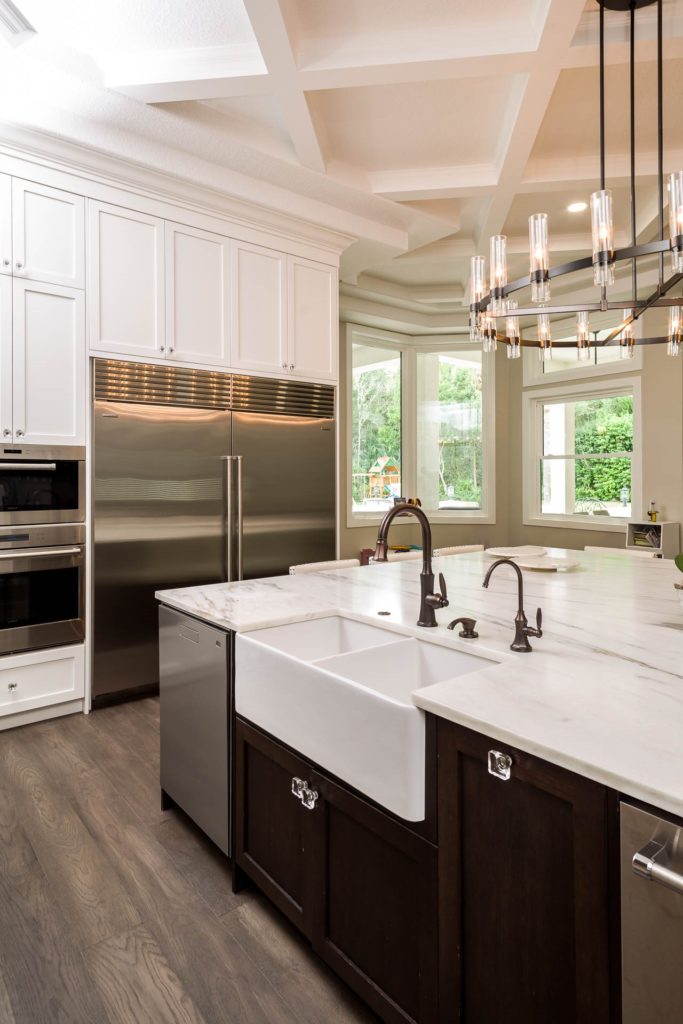
This transitional-style kitchen incorporates Shaker-style cabinets, coffered ceilings and marble with modern mixed metals such as glass, oil-rubbed bronze and stainless steel.
5. Adding carpet for texture is very much a part of the transitional design. They anchor the furniture in the room, add color, and offer soft luxury underfoot. You can add texture and pattern with a traditional woven or knotted carpet, and it is recommended to pick neutral colors to complement the design.
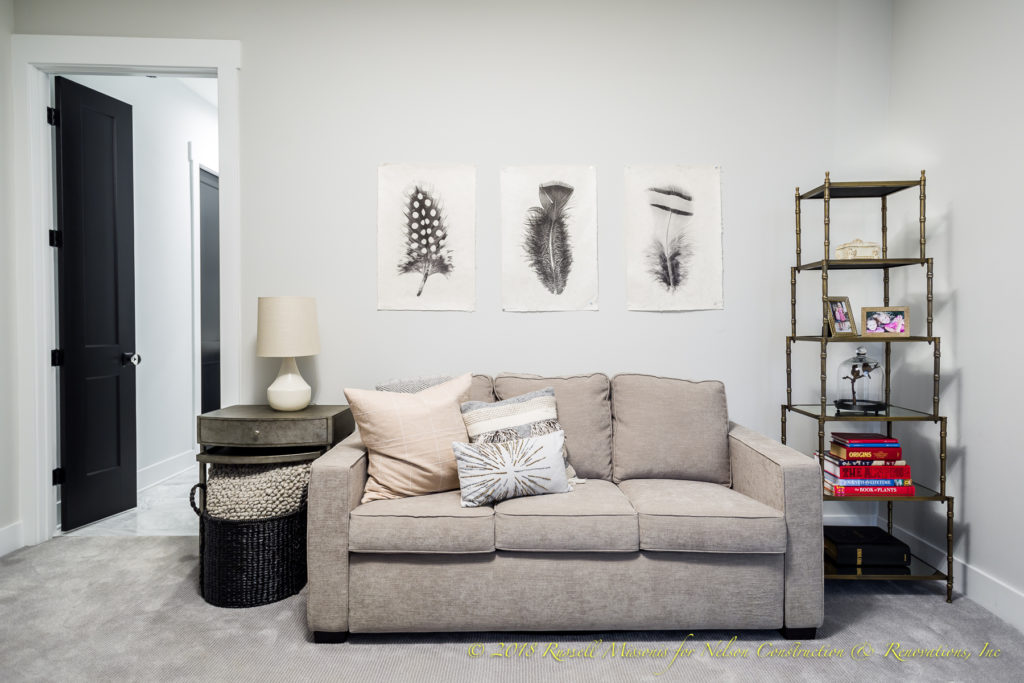
This transitional-style home combines soft textiles and unique carpet with modern-looking black doors.
6. Modern art can also be used to shift from traditional to transitional. A transitional style home is very focused on accents and the accents can shift the design either to modern or traditional. Select your favorite contemporary artwork to create a striking focal point. And, to not overdo the look, best practice is to take a minimalist approach.
For more in-depth help watch our latest video, How To Get Started On Designing Your Home.
Our advice… Get your create on and have fun!!
If you’d like to see more videos on construction, construction tips, renovating, remodeling home additional, design-build and design tips subscribe to our YouTube Channel today! https://www.youtube.com/user/NelsonConstReno
Nelson Construction and Renovations, a family business founded in 2006, is a design-build company that specializes in high-end remodels, home additions, and custom homes. With our headquarters in Clearwater, Florida, we serve homeowners all over Pinellas and Hillsborough Counties. We are an award-winning member of the National Association of the Remodeling Industry and have an A+ rating with the Better Business Bureau.
Creative Commons Attribution: Permission is granted to re-post this article in its entirety with credit to Nelson Construction and a clickable link back to this page
"Reliable, Licensed & Insured Building Contractor"
For A NO Obligation Design Consultation
Contact Us
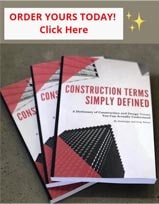
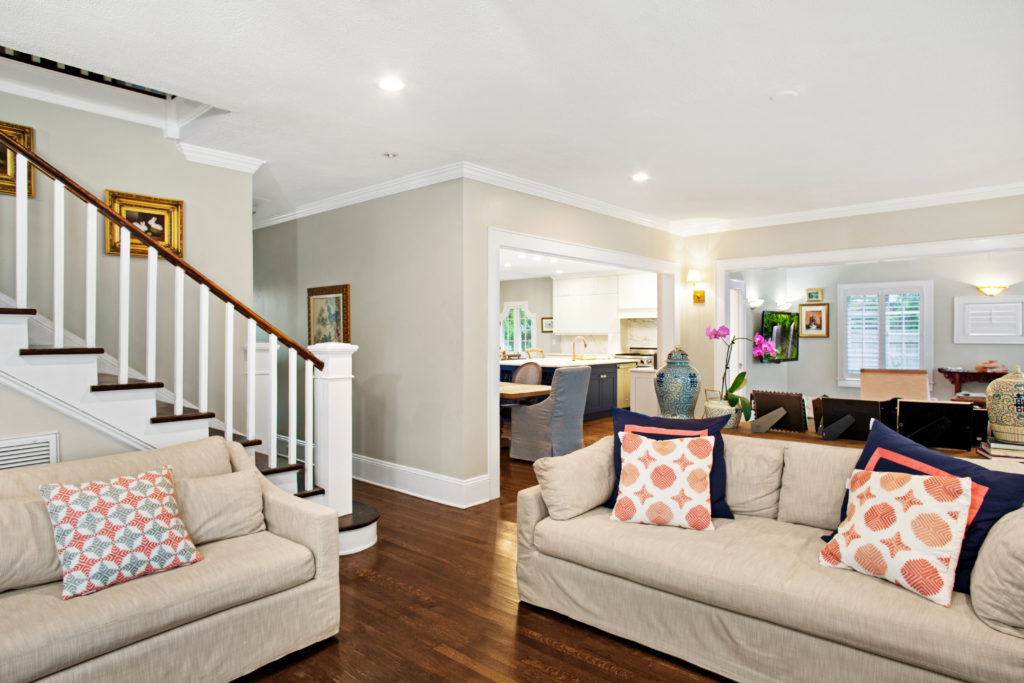
 Loading
Loading 






Great items from you, man. I’ve take into accout your stuff
previous to and you’re just too magnificent. I really like what you have acquired right here,
really like what you are stating and the way through which you say
it. You’re making it enjoyable and you still
take care of to stay it smart. I can’t wait to learn much more from you.
This is really a great site.